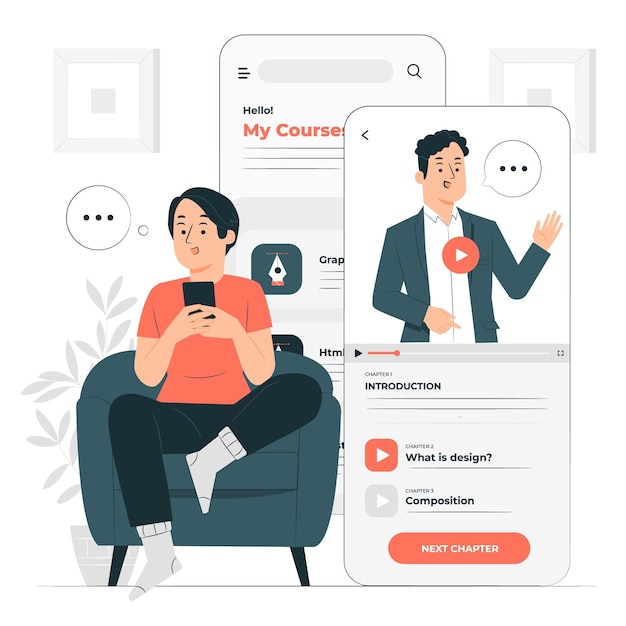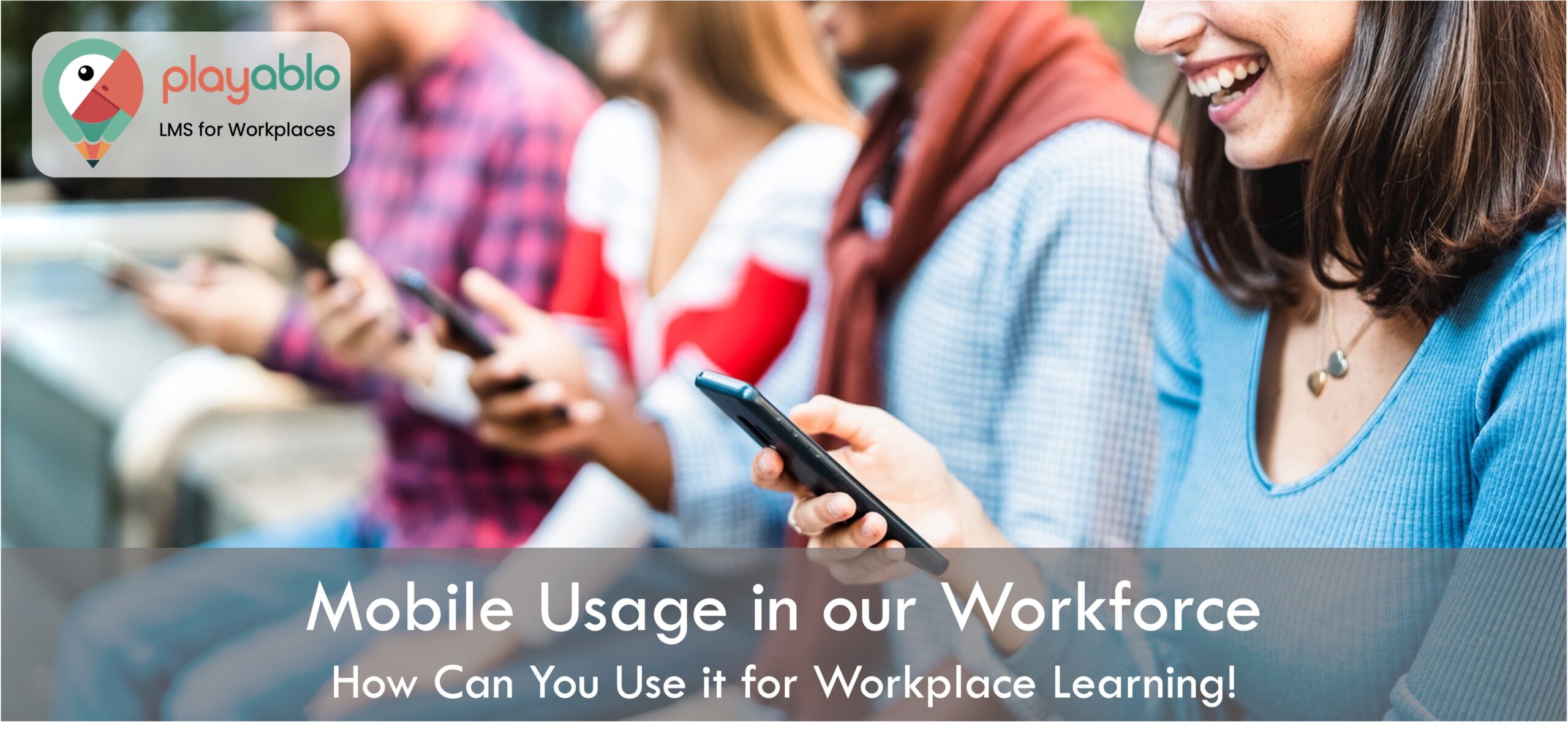What is the relationship between mobile learning and the evolution of mobile phones? The average modern-day corporate learner never leaves home without their smartphone. After all, this mobile gadget is a technology-savvy individual’s extension.
They use it to look for information on the Internet, learn new things, and keep themselves engaged. This trend alone expands your and other eLearning professionals’ options for reaching the always-on business learner. However, to reap the surge in smartphone usage benefits and the evolution of mobile phones, you must go deeper and even challenge preconceptions. It would help to discover more about mobile learners’ behaviors, interests, and attitudes.

What kind of gadgets do they have, and how often do they use them? What do they do with these devices? When do they start using the Internet? Do they distinguish between devices used at home and those used at work? These are only a few of the numerous queries you should be able to respond to. You can use them to figure out when and where the mobile learning experience occurs and how to improve it.
Keep in mind that mobile learners interact with their devices and respond to mobile learning differently. This is the new standard of living. And it’s a good idea to plan for it while putting together your next training assignment. To begin, consider the following suggestions.
Table of Contents
Mobile Usage Habits of Your Employees and How You Use These For Mobile Learning Benefits?
Mobile users are prone to changing gadgets
People tend to switch from one gadget to another to stay connected as their device collection grows. According to a Nielsen report, this is a common occurrence. They set one down at work, such as a laptop, and then pick up another when they go home, such as a home desktop or tablet.
Of course, they want to pick up where they left off with their adventure. Furthermore, a recent survey on the evolution of mobile phones shows that one of every three smartphone users multitasks. Most multi-device users begin an activity on one device and then switch to another to complete it, with the most common reason being to complete a task on a larger screen.
The analysis of the evolution of mobile phones found that 22% of switches were completed on a tablet and 58% on a laptop. The difficulty is, how can we get these multi-device owners to learn effectively? For example, users who use many devices or platforms need content they can access from any location.
They want content that adjusts to the screen size they’re on, which is why responsive design is so important. People also require content in various portable forms so that they can complete their education regardless of the device.
To summarise, you must better understand how learners consume content across various technology platforms. To succeed in this environment, eLearning professionals must better understand technology, the evolution of mobile phones, interaction design, and cross-platform media consumption.
New-age learners have limited patience

Speed is one of the demands of technology-savvy students who have adopted the evolution of mobile phones. Speed is the single most essential characteristic that best describes their computing habits.
According to recent data from the SOASTA 2013 Website and Mobile App Report, 76% of smartphone users will wait 10 seconds for a page to load. The aspect of immediacy, for example, is crucial to mobility. Everything takes place in the present moment.
This necessitates eLearning professionals and businesses concentrating on what learners demand attention to. Excellent customer experience is at the center of this, and it must include the following:
- Courses that load rapidly in a variety of browsers. Readers may become irritated if they are a little sluggish. You may avoid this by deleting unneeded photos and other media from your material and optimizing it for high-speed loading.
- For portable offline viewing, content is compatible with all systems. However, availability isn’t the only goal. It should work without requiring users to wait more than 10 seconds for the app to load.
Mobile users enjoy watching online videos
More than half of smartphone and tablet users (61%) and 66 percent, respectively, watch video on their devices. After a year of further evolution of mobile phones, the percentages are expected to rise to 67 percent and 90 percent, respectively. This rise is due to several factors. Smartphones are far more portable than tablets, which offer a superior video experience. Both may not wholly replace television, but they are increasingly being used as second (or even third) screens by consumers.
And here’s another interesting factoid about the evolution of mobile phones: viewers tend to have greater attention spans when watching on smartphones and tablets. They usually only last two minutes or less on a PC. However, they last roughly 2.4 minutes on iPhones, three minutes on Android phones, and over four minutes on Symbian phones. iPad users have the most significant attention span, five minutes on average.
Short bursts of activity are common among mobile users

The new normal is shorter, sharper bursts of activity. People do use their smartphones to “snack” on content. Consider social networking sites and instant messaging apps for quick information updates. Yahoo! did research to back up this claim.
The report on the evolution of mobile phones shows that mobile users are unable to put their phones down. They say they munch on content during the day, mainly between 8:30 a.m. and 1 p.m., according to 53% of them. However, this occurs in stages. It doesn’t always happen during those hours, either.
Another collection of solid facts follows. Some 48% of users feel comfortable using their phones in the lavatory, while 70% of people check their phones at least once a day during meals.
Wherever they are, mobile learners are always connected
The divide between mobile learners’ business and personal lives is dissolving thanks to another trend in the evolution of mobile phones — the practice of Bring Your Own Device (BYOD). They have access to content at work or home while “doing” something else.
They do it on the bus while walking down the street and watching television. Although iPad and tablet owners may not move much, iPhone and smartphone users can access material while jogging, shopping, or even riding bicycles. To summarise, eLearning professionals must consider the learner’s context while developing practical mobile courses.
Smartphone users are increasingly relying on their smartphones to educate themselves
According to a poll on the evolution of mobile phones by lynda.com, 30% of smartphone users used their phones to consume organizational training content. The findings of this study show that professionals are increasingly consuming learning on the go, a trend that satisfies their demand for on-demand information that improves workplace performance.
Employees will soon obtain educational content primarily through mobile learning. In addition, 74 percent of learners use mobile devices for eLearning, according to the Ambient Insight Worldwide Mobile Learning Market Report.
Companies have recognized the value and utility of mobile learning as a tool for corporate development
Companies worldwide are realizing the importance of developing targeted strategies for creating and implementing mobile learning because of the evolution of mobile phones. According to a Brandon Hall Group report, mobile learning is now one of the top three business growth priorities, trailing only the demand for seamless business alignment and better data mining.
Mobile Learning is being used by a growing number of businesses
According to the ATD 2015 Mobile Landscape report on the evolution of mobile phones, 34% of the organizations questioned had developed aggressive mLearning programs for their employees, up from 15% in 2010.
The most popular content sections for mobile devices
According to the Chief Learning Officer magazine’s results this year, about one out of every three learning managers conducts compliance and technical skills training to mobile devices.
Video and mobile make a winning combination. According to a Brandon Hall study on the evolution of mobile phones, more than 300 L&D experts believe video is a successful instructional medium since learners report enhanced engagement with this learning format. As a result, according to a 2012 ASTD report on mobile learning, video ranks third among the most preferred formats for providing instructional content to mobile devices.
How Can You Leverage The Above User Habits and Trends Via Mobile Learning?
Mobile learners are indeed exposed to a variety of distractions in these scenarios. It does, however, open up new avenues for participation. Consider podcasting or bite-sized learning. These methods are beneficial for self-directed learners who wish to make the most of their time by listening to audio classes or skimming brief texts. Let us now break down how you can utilize the evolution of mobile phones and the respective habits — mentioned earlier via mobile learning.
Introduce flexibility
Not everyone has the time or attention span to study for long periods. Students can take study breaks and pick up where they left off with well-designed mobile learning apps. Modern students need flexibility because available study time varies substantially depending on work schedules, family activities, and other time commitments.
Incorporate portability

The conventional full-time employee is dwindling in popularity. Workers today may just as likely be someone who works part-time, does a full-time job from home, and supports or cares for a family due to the COVID-19 pandemic. These individuals may not have the time to settle into a new job and dedicate hours to training.
Instead, they must study while commuting, during a work break, or while caring for their children at home. Learning on the go using a phone or tablet can significantly impact a student’s academic progress. Because of the accessibility of today’s devices, following the rapid evolution of mobile phones, it is now possible to access study materials from nearly anywhere.
Embed customization
Everyone does not learn in the same way. Some people learn best by taking quizzes, while others learn best by watching videos, listening to podcasts, or reading e-books. In recent research, bite-sized learning, aka microlearning or shorter e-learning modules, is beneficial and effective for corporate training.
Mobile technology, a result of the evolution of mobile phones, fortunately, can suit almost every learning style. Students can create a mLearning study program tailored to their specific learning style, increasing their chances of passing exams or acquiring professional credentials.
Boost accessibility
Smartphones and tablets were once considered huge investments. The price of smartphones and tablets has dropped dramatically following the evolution of mobile phones, and almost everyone now possesses at least one.
Similarly, mobile learning programs and applications are inexpensive. Mobile learning apps, as well as eLearning, are typically less expensive than traditional classroom training. In addition, these apps are significantly less costly than conventional ILT or online certification preparation classes.
Promote immersive learning
Many people think that the most incredible way to learn is to “immerse” oneself in the subject at hand. Because study materials aren’t always portable or accessible, traditional study methods don’t always allow for immersion. Employees can use mobile learning to obtain study materials at any time.
Students can choose the media in which they want to interact. Students may choose to take quizzes or read study aids earlier when they feel more alert. The student may choose more passive study methods later in the day, such as listening to a podcast or watching a video. Users can include studying into their daily life via mobile learning. The employee can get actual command of the subject through time, which will boost their chances of success.
Ad: PlayAblo’s Enterprise-Grade Micro-Learning platform is built for millennial learners. Micro-Learning, along with assessments and gamification features, ensures learning outcome measurement along with sustained engagement.
Find out more and request a custom demo!
What Are The End Results?

A boost in learner motivation
Learner motivation improves due to mobile learning, which boosts willingness to take courses. According to the findings of a recent study, 70% of respondents reported increased motivation to learn when they could successfully navigate the courses using their mobile devices.
Enhanced learner engagement
According to the results of the Asia-Pacific Skillsoft survey, 72 percent of respondents said mobile learning had boosted their involvement.
Improved learning time frames
The Merrill Lynch GoLearn initiative’s findings show that mobile learning reduces learning time. One set of virtual learning and mobile-savvy employees utilized their mobile devices to learn during the experiment, while the other group used traditional desktop computers. Smartphone users completed courses 45 percent faster than those who used desktops to complete the modules. The exam scores for the two groups were also the same, demonstrating that instructional effectiveness is unaffected when training is delivered via mobile devices.
Increased market adaptability among companies
According to a CSE Software, Inc. poll, 72 percent of businesses say that adopting mobile learning has helped them become more responsive to market developments. The results of the Asia-Pacific Skillsoft survey show that mLearning is also suitable for business: After adopting mobile learning, 76 percent of decision-makers reported increased business growth, while 55 percent reported improved business outcomes.
Conclusion
Mobile gadgets, without a doubt, are forever transforming corporate learning. However, this does not imply that classroom-based training or traditional eLearning courses will be phased out; instead, the mobile revolution is forcing businesses to rethink their training strategies and develop learning programs tailored to mobile devices. New learning technologies can make a significant impact on people’s lives. Professionals serious about succeeding can use these mobile learning technologies to improve their study habits, gain information, and succeed.
Ad: PlayAblo’s Enterprise-Grade Micro-Learning platform is built for millennial learners. Micro-Learning, along with assessments and gamification features, ensures learning outcome measurement along with sustained engagement.
Find out more and request a custom demo!







Comments are closed, but trackbacks and pingbacks are open.